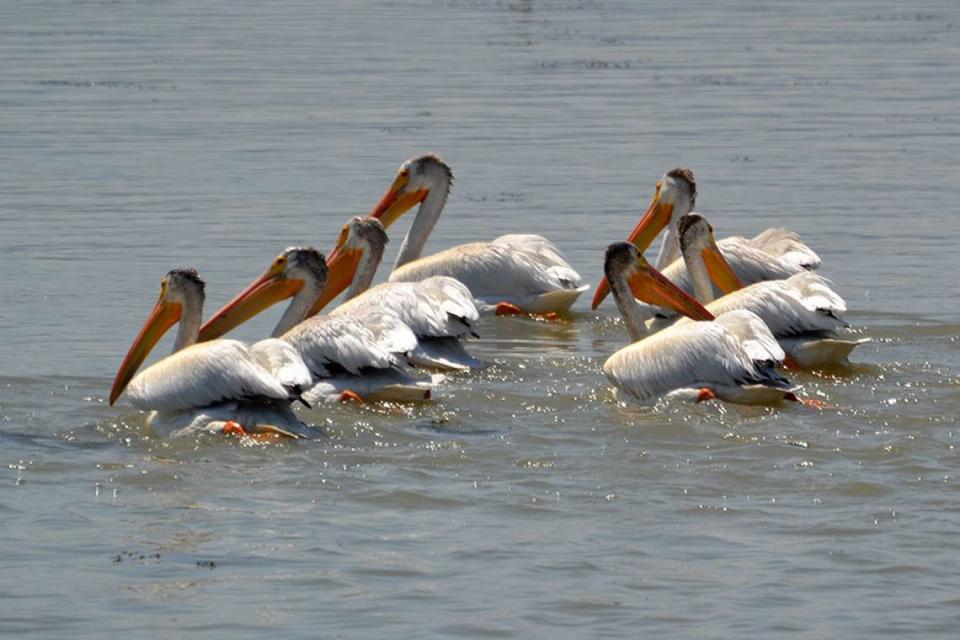Pelicans return to breed on island in Utah for the first time since 1943. Why?
American white pelicans — one of the largest flying birds in North America — have returned to nest on an island in Utah for the first time since 1943, officials said.
The water birds were spotted April 29 on Hat Island, on the Great Salt Lake, the Utah Division of Wildlife Resources said in a May 6 news release.
Wildlife officials said they believe the birds returned to the area after ditching their nesting colony on Gunnison Island last year.
Pelicans are “susceptible to disturbances” such as predators, officials said, which is one of the reasons the birds left Gunnison Island and relocated on Hat Island instead.
It’s also why the pelicans disappeared from Hat Island 81 years ago and didn’t return for decades, officials said.
Pelican nesting process takes months
Because pelicans are susceptible to disturbances, both Hat and Gunnison islands have been closed off to the public. No one can go within 1 mile of the islands by land, air or water, wildlife officials said.
The birds need peaceful and uninterrupted spaces where they can build their nest, lay eggs, tend to the eggs and then raise the babies, officials said.
“In total, this process takes about four months or longer, so pelicans need a protected space for a long period of time, and remote islands provide that protection,” the wildlife agency’s Great Salt Lake Ecosystem Program Manager John Luft said in the release.
However, officials said keeping these birds protected becomes a problem as the islands are no longer “islands” because of low water levels.
Predators like coyotes can then travel across the land to the nesting pelicans, officials said, posing a risk to the breeding birds.

Biologists said although the pelicans left Gunnison Island last year, some birds were seen on the island this year.
“Some of the pelicans are breeding for the first time this year, so they didn’t experience the abandonment event last year,” the agency’s Great Salt Lake Ecosystem Program Wildlife Biologist John Neill said.
American white pelicans are much larger than the bald eagle and have broad wings, a long beak and neck and webbed feet, according to the Cornell Lab of Ornithology’s guide, All About Birds.
The aquatic animal breeds on isolated islands, lakes or on shallow wetlands.
1,000 sea lions gather at CA pier, video shows. ‘Like a National Geographic photograph’
Stranded seal was ‘dehydrated and consuming sand.’ Watch him get a second chance
30-foot-long gray whale is almost rescued, then goes missing. ‘Something happened’

